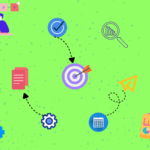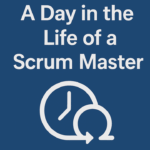Home / Our Blog / How to Plan and Implement a Productive Sprint
How to Plan and Implement a Productive Sprint
Aug 08, 2025 Educational
In today’s fast-paced work environment, staying focused can feel almost impossible. Emails, chat notifications, and back-to-back meetings can eat up hours without you realizing it. For many managers, these interruptions add up to hundreds of lost hours every year, hours that could have been spent on deep, productive work.
The result? Lower efficiency, missed deadlines, and a constant feeling of being “busy” without real progress. While many companies try to fix this by adding new tools or technology, the truth is that better habits are just as important as better software.
One proven approach to reclaim focus and get more done is the productivity sprint, a structured way to work in short, intense bursts with planned breaks in between. This method helps individuals and teams achieve more in less time while avoiding burnout.
What is a Productivity Sprint?
A productivity sprint is a short, intense period of focused work followed by a break. Think of it as a race against the clock, but one where you decide the pace.
It’s similar to the Pomodoro Technique, where you work for 25 minutes and take a 5-minute break. However, in a productivity sprint, you choose how long you work and how long you rest based on your attention span and workload.
The key difference between a productivity sprint and an agile sprint is the time frame. Agile sprints in software development usually last two weeks. Productivity sprints are much shorter, they can be as short as an hour or as long as a few days. But making them too long can lead to burnout and reduced efficiency.
Benefits of Productivity Sprints
A well-planned sprint offers multiple benefits for individuals and teams. Here’s how it can transform your work:
1. Better Focus
Before the sprint starts, the team agrees on what needs to be done. This includes defining tasks, expected outcomes, and deadlines. This clarity removes confusion and allows everyone to concentrate fully on the right tasks.
When you know exactly what to do and when to do it, distractions naturally decrease.
2. Faster Task Completion
Sprints are designed to cut out unnecessary interruptions. No surprise meetings, no sudden priority changes, just uninterrupted work time. This makes it possible to finish tasks much faster than usual.
3. Improved Time Management
Since sprints are time-bound, they create a natural sense of urgency. Everyone knows the clock is ticking, which motivates them to manage their work hours wisely.
4. Efficient Use of Resources
Productivity sprints make it easier to coordinate work between team members. For example, a designer can finish a draft in the first half of the sprint, and the developer can work on it in the second half. This smooth flow prevents delays.
5. Higher Energy Levels
Breaks are a core part of the sprint structure. After a period of intense work, you rest and recharge. This helps prevent mental fatigue and keeps energy levels high throughout the day.
How to Plan and Execute a Productivity Sprint
A productivity sprint should be planned carefully. The goal isn’t to push the team to its limits every day but to work smarter and avoid burnout.
Here’s a detailed guide:
1. Set Clear Goals
Start by defining exactly what you want to achieve during the sprint. Vague goals lead to vague results. Use the SMART method:
- Specific: Define exactly what needs to be done
- Measurable: Make sure progress can be tracked
- Achievable: Keep goals realistic
- Relevant: Align with business priorities
- Time-bound: Set a deadline.
Example for a marketing project:
- Finalize a campaign tagline by Day 2
- Draft 20 social media posts by Day 3
- Approve the advertising budget by Day 5
This level of clarity makes it easier to plan your work schedule.
2. Break Goals into Smaller Tasks
Once the main goals are clear, split them into manageable action steps. Assign each task to the right person and set deadlines.
Example for finalizing a tagline:
- Brainstorm with the creative team
- Make a list of potential taglines
- Shortlist the best ideas
- Test them in different formats
- Approve the final version
In Scrum Slate, you can assign tasks, add descriptions, and track dependencies so nothing gets missed.
3. Create a Realistic Timeline
A common mistake is cramming too many tasks into one sprint. Instead, focus on quality over quantity.
Steps to plan your timeline:
- Review all pending work and choose what fits into the sprint
- Estimate how long each task will take
- Consider team member availability and workload
- Check task dependencies to avoid bottlenecks
- Add buffer time for unexpected delays
Scrum Slate makes this easier with features like Workload View to avoid overloading your team and Gantt View to track dependencies visually.
4. Prepare Your Workspace
A cluttered workspace creates mental clutter. Before the sprint:
- Clear unnecessary items from your desk
- Turn off non-essential notifications
- Put your phone in focus mode
- Organize digital files for quick access
In Scrum Slate, you can set up your preferred view, whether it’s Board View for visual task tracking or Calendar View for deadline management.
5. Execute the Sprint
Now it’s time to put your plan into action:
- Pick the first scheduled task
- Review the task details so you understand the requirements
- Focus only on that task until it’s complete
- Track the time you spend in Scrum Slate
- Take a break when the sprint period ends
If a task isn’t finished, decide whether to move it to the backlog or include it in the next sprint.
6. Use Time Management Techniques
Several techniques can make your sprint even more productive:
- Pomodoro Technique: Work for 25–50 minutes, then rest for 5–10 minutes
- Time Blocking: Assign specific hours of the day for specific types of work
Time Tracking: Measure how long tasks take so you can improve planning in future sprints
7. Track Progress and Reflect
During the sprint:
- Share updates in daily stand-up meetings or Scrum Slate’s chat feature
- Monitor progress in Scrum Slate dashboards to see what’s on track and what’s falling behind
After the sprint:
- Hold a review meeting to discuss achievements and challenges
- Celebrate wins, even small ones
- Identify ways to improve for the next sprint
Best Practices for Winning Sprints
Running a productivity sprint is more than just setting deadlines and checking off tasks. To make your sprints truly effective, you need the right habits and team culture. Here’s how to get the most out of every sprint:
1. Take Breaks Seriously
Breaks are not optional, they’re part of the sprint’s design. After a period of intense focus, your brain needs time to rest and recharge. Use your breaks to:
- Step away from your desk
- Stretch or walk around
- Drink water or have a healthy snack
Avoid mindless scrolling on social media or diving into unrelated work. Your goal is to come back refreshed and ready for the next round of focused effort.
2. Celebrate Milestones
Acknowledging progress keeps motivation high. Whether your team meets a key deadline or finishes a challenging task, take time to celebrate. This can be as simple as:
- A quick thank-you message in the team chat
- A short group meeting to share successes
- Small rewards like coffee treats or shout-outs during stand-ups
Celebrating wins helps maintain momentum and builds a positive work culture.
3. Prioritize Self-Care
Your productivity depends heavily on your physical and mental well-being. Healthy habits directly affect your focus, creativity, and problem-solving skills. Make sure you:
- Get enough quality sleep
- Eat balanced meals that give you steady energy
- Exercise regularly to boost mood and brain function
When you take care of your body and mind, you bring your best self to each sprint.
4. Communicate Openly
Clear communication prevents misunderstandings and delays. If you’re struggling with a task, stuck on a dependency, or feeling overwhelmed, speak up early. Letting your team know:
- Helps find solutions faster
- Avoids bottlenecks that can derail the sprint
- Builds trust and teamwork
Open communication also means giving feedback, both positive and constructive, to help the team grow.
5. Keep Improving
Every sprint is a chance to learn. After each one, review what went well and what could be better. Ask questions like:
- Were the goals realistic?
- Did the team have the right resources?
- Could we improve our time estimates?
Apply these insights to the next sprint. Over time, small improvements will compound, making each sprint more efficient than the last.
Final Thoughts
Short, focused bursts of work followed by breaks are proven to improve productivity. Whether you work alone or in a team, sprints help you finish more in less time, without burning out.
But success requires more than just willpower. You need a clear plan, realistic timelines, and the right tools to keep track of everything.
That’s where Scrum Slate comes in, helping you organize tasks, manage deadlines, monitor progress, and collaborate easily.
Plan your first productivity sprint with Scrum Slate today and see the difference in your results.









